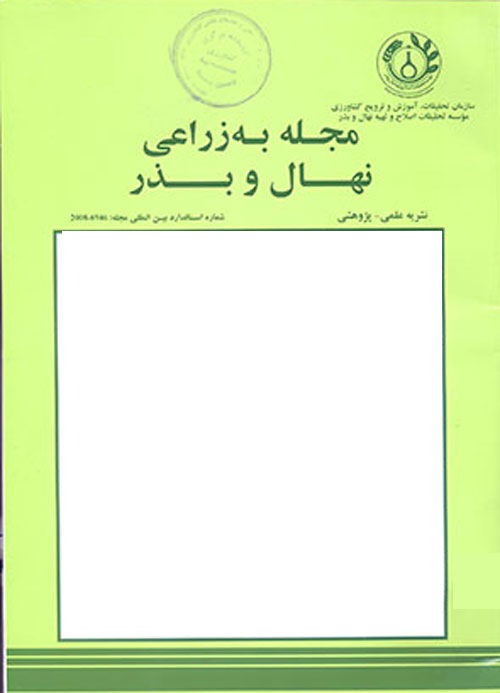Effect of Terminal Drought Stress on Grain Yield and Its Components in Bread Wheat (Triticum aestivum L.) Genotypes in Dry and Warm Conditions in South of Fars Province
To evaluate response of different wheat (T. aestivum L.) genotypes to drought stress in terminal growth stages, a split-plot arrangements in a randomized complete block design with three replications was conducted in Darab Agricultural Research Station in 2001-2002 and 2002-2003 cropping seasons. Main plots included three irrigation regimes: I1: five times irrigation in: stem elongation, booting, flowering, milk and dough stages, I2: four times irrigation in; stem elongation, booting, flowering and milk stages; I3: three times irrigation in; stem elongation, booting, and flowering stages and five bread wheat genotypes including: Chamran (local check), S-78-11, S-75-20, S-79-10 and S-79-18 were assigned to sub plots. Combined analysis of variance showed that effect of irrigation, genotype and irrigation × genotype on grain yield, grain weight, grain per spike, spike per m2, water productivity, harvest index and biological yield were significant. Among the grain yield components, grain weight was more affected by deficit irrigation. Water productivity in I1 and I2 irrigation regimes were similar, but significantly more than in I3. However, grain yield, grain weight, harvest index and water productivity in S-78-11 were significantly lower than other two genotypes. Chamran, S-79-10 and S-79-18 had significantly higher grain per spike than the other two genotypes. The highest spike per m2 was for S-78-11. S-79-18 and S-78-11 had the maximum and minimum biomass, respectively. Grain yield, grain weight, grain per spike, harvest index and water productivity of Chamran, S-79-10 and S-79-18 did not differ, and were higher in these genotypes. On the basis of the results of this research, since in I3 grain yield was severely reduced, it would not be considered as an efficient irrigation management strategy, while four times irrigation regime could be considered as a suitable irrigation strategy for saving of irrigation water. Chamran and S-79-10 had higher grain yield in all three irrigation regimes, and can be considered as suitable genotypes under both moisture stress and non-stress conditions.
- حق عضویت دریافتی صرف حمایت از نشریات عضو و نگهداری، تکمیل و توسعه مگیران میشود.
- پرداخت حق اشتراک و دانلود مقالات اجازه بازنشر آن در سایر رسانههای چاپی و دیجیتال را به کاربر نمیدهد.


